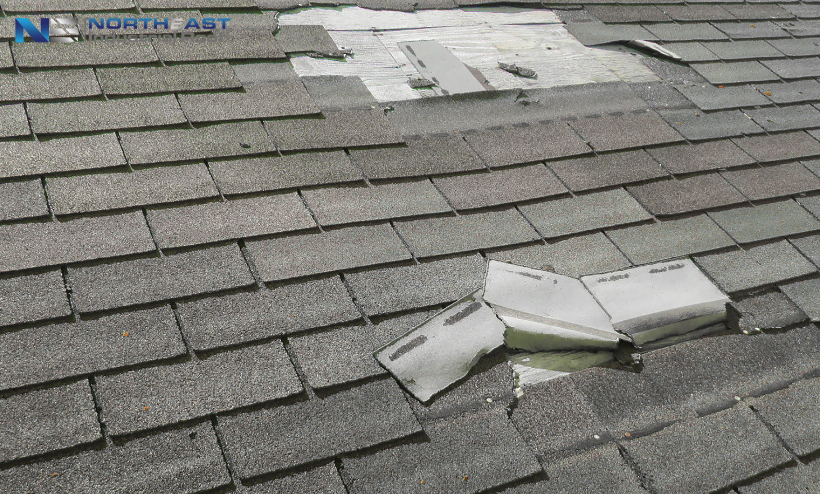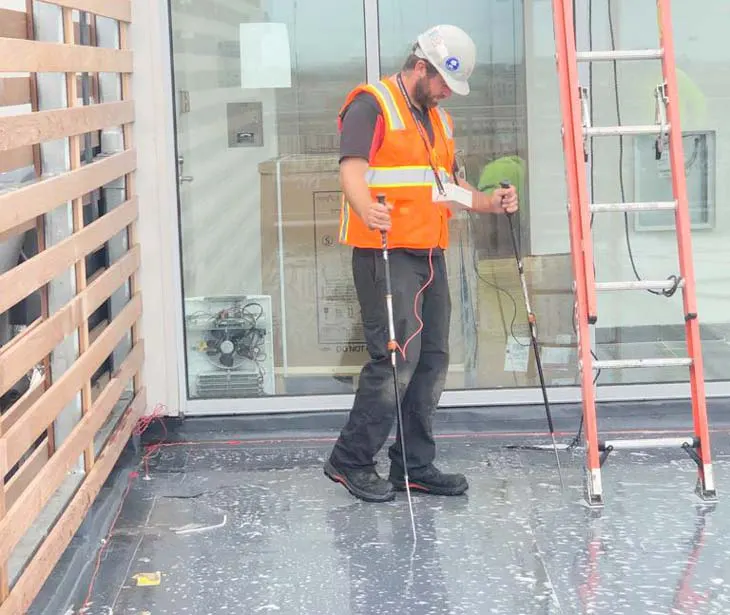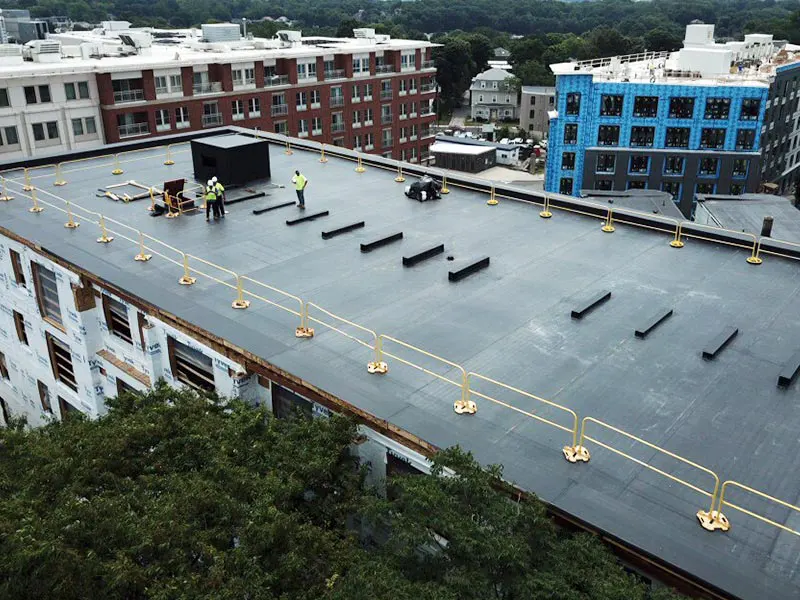A leaking roof isn’t just an inconvenience—it’s a threat to your building’s structure, insulation, electrical systems, and productivity. For commercial and industrial properties, even a small leak can lead to thousands of dollars in damage and potential code violations.
Below, we break down 7 effective solutions to fix a roof leak, plus when it’s time to bring in professionals to ensure long-term performance and safety.
1. Identify the leak’s location
Start with a thorough visual inspection inside the building. Water stains on ceilings, damp insulation, or mold are signs of roof failure. Then, inspect the roof surface directly above those areas, looking for:
- Cracked or punctured membrane
- Pooling water
- Separated seams or flashing
- Damage around vents, skylights, or HVAC units
Tip: Leaks often travel along insulation or structural framing, so the entry point may be offset from where the water appears indoors.
2. Patch membrane tears or holes
If you spot visible damage on a TPO, EPDM, or PVC membrane, a compatible patch kit can offer a short-term solution:
- Clean the area
- Cut and apply the patch
- Seal edges using lap sealant or heat weld (for TPO/PVC)
- Press and roll to secure
This solution is best for isolated damage under 12 inches in diameter.
3. Reseal flashing and seams
Flashing around chimneys, parapets, HVAC curbs, or skylights can degrade over time. If flashing is cracked or detached:
- Remove loose sealant or debris
- Apply fresh roofing-grade sealant or mastic
- For metal flashing, resecure with fasteners if necessary
Regular inspection of these vulnerable points is key to leak prevention.
4. Clear roof drains and gutters
Ponding water due to blocked drains is a leading cause of leaks in flat and low-slope commercial roofs. If drains are clogged:
- Remove debris by hand or with a shop vacuum
- Flush with water to ensure proper flow
- Check overflow drains for function
- Consider installing protective screens or drain domes
Improving drainage reduces pressure on roofing seams and membranes.
5. Repair roof penetrations
Penetrations—such as pipe boots, vents, or antenna bases—are common leak sources. Repair steps include:
- Inspect for cracked boots or failing gaskets
- Reseal with roofing mastic or replace faulty components
- Ensure all fasteners are tight and covered
Each penetration should be properly flashed and sealed, especially on older roofs.
6. Replace damaged sections
If a roof area has extensive blistering, water infiltration, or delamination, a full-section replacement may be required. This involves:
- Removing the compromised membrane and saturated insulation
- Drying the substrate (or replacing it if necessary)
- Installing new membrane and resealing seams
This should be handled by a professional commercial roofing contractor.
7. Call a professional roofing contractor
Temporary repairs can buy you time—but only expert assessment and installation guarantee long-term protection. Professionals bring:
- Leak detection tools (like infrared or core cuts)
- Manufacturer-authorized materials
- Proper welding/sealing techniques
- Warranty-compliant repairs
Roof leak repair near me with Northeast Industrial Roof
At Northeast Industrial Roof, we provide fast, reliable, and certified leak detection and repair for commercial and industrial properties. Whether your roof is TPO, EPDM, PVC, or modified bitumen, we:
- Identify the root cause
- Offer both temporary and permanent repairs
- Ensure waterproofing meets code and warranty standards
- Minimize disruption to your operations
Contact Northeast Industrial Roof today to schedule your roof inspection or emergency leak repair service.








